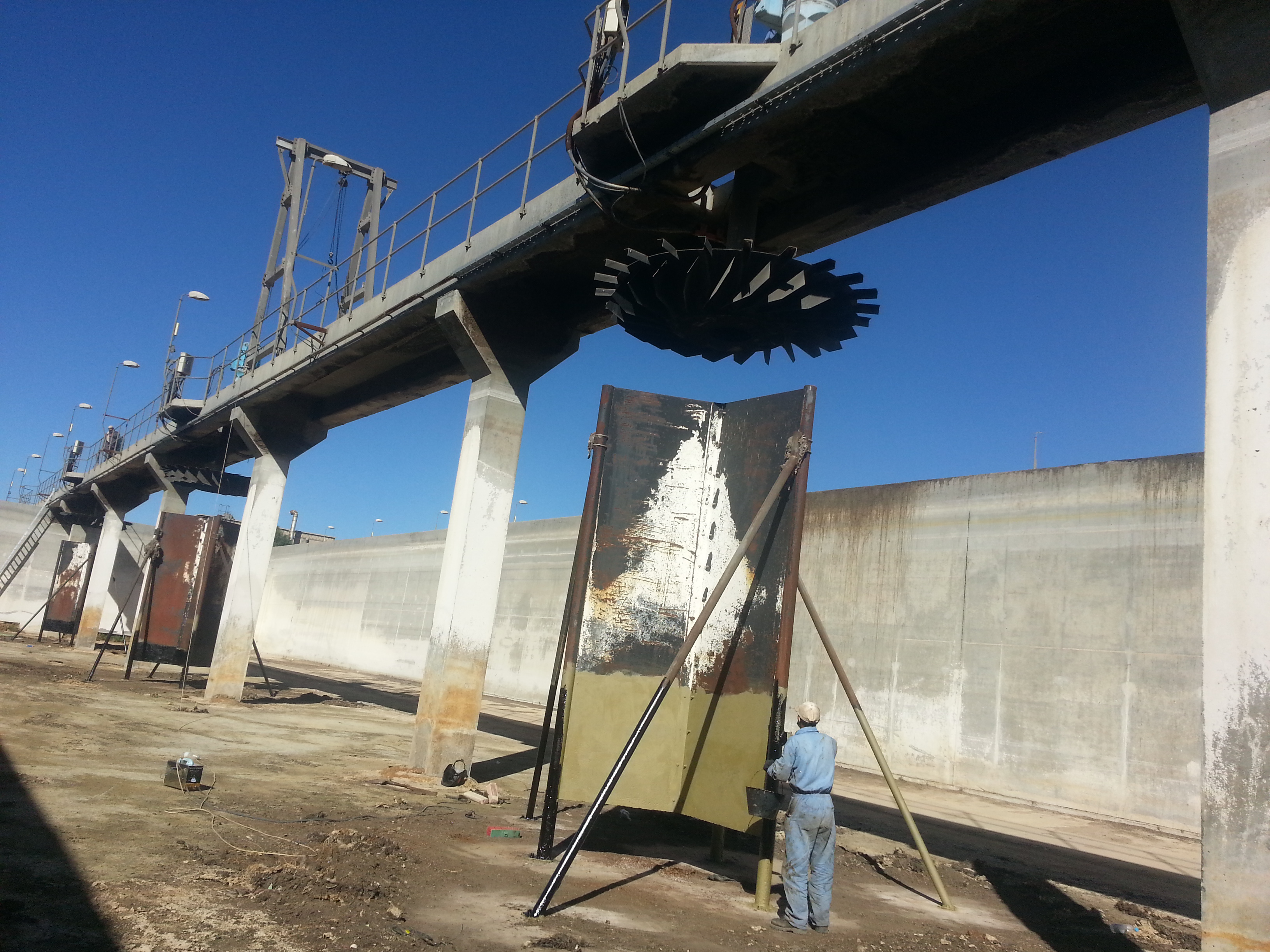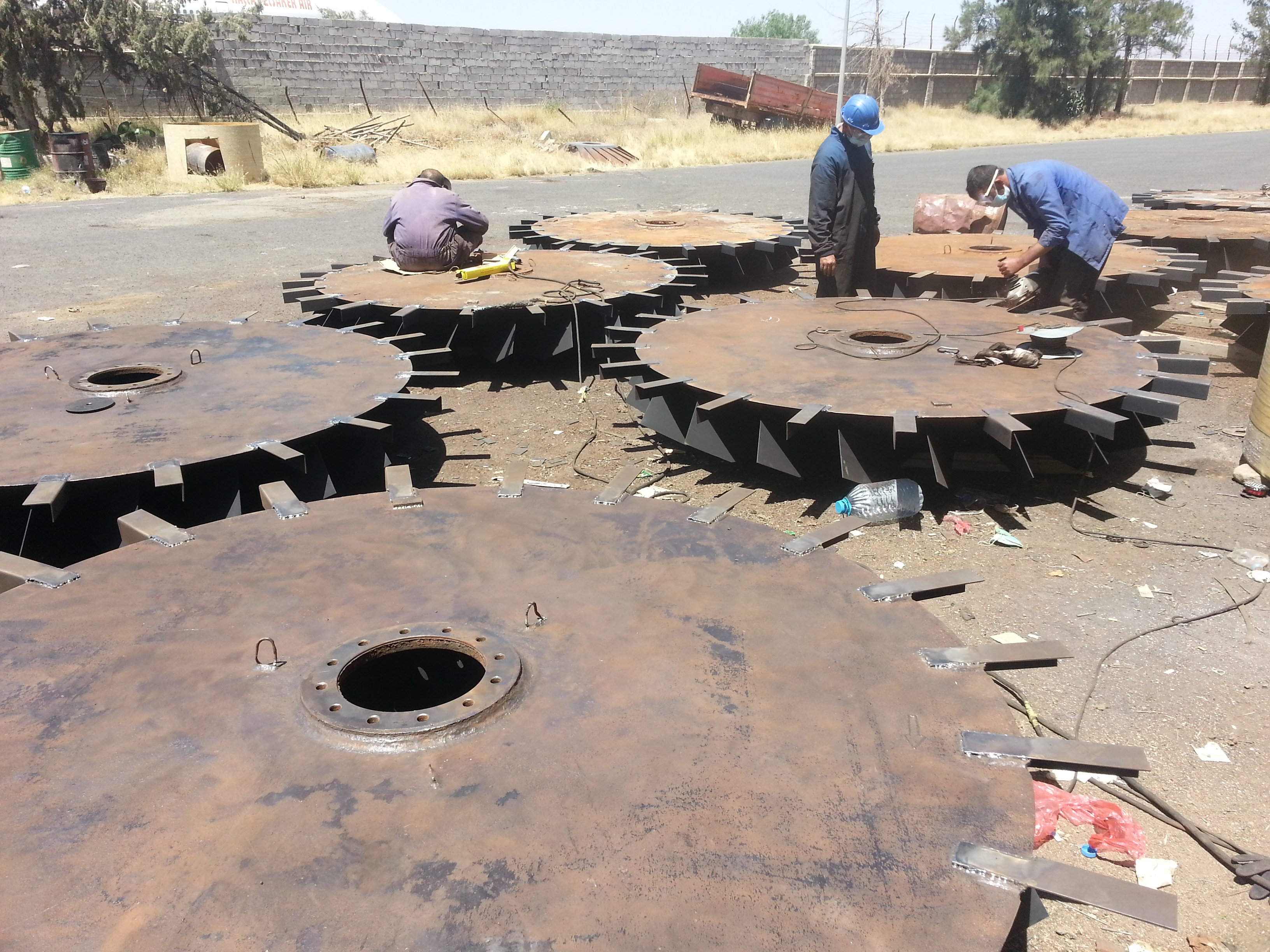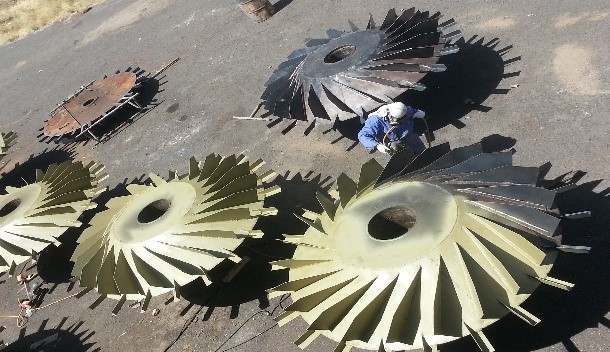
Innovative local manufacturing
This practice concerns the successful manufacturing of aeration fans that are used in the aeration basins in the Waste Water Treatment Plans (WWTP) of Sana’a LC. These fans are produced in the WWTP by staff from the utility using locally available materials to replace the worn out fans in the plant. Production was initiated as the original manufacturing factory has stopped selling this technology. The production was successful in reducing operation and maintenance cost and prevented disruption of plant operation which would have increased the public health risk of the capital’s residents and downstream neighbourhoods.
Description of the problem
At the heart of the WWTP of Sana’a LC is a biological treatment process with an extended surface aeration system and recirculation of activated sludge. The treatment plant comprises of a mechanical aeration system to provide the microorganisms with sufficient oxygen (Figure 21). Operating the fans consumes 80% of the plant’s energy bill. The treated waste water is used for irrigation of agricultural crops, and the sludge is used as agricultural fertilizer. The agricultural products are sold to residents of the capital and neighbouring governorates.
Although the WWTP is severely overloaded in terms of organic and hydraulic loads still it reduces the sanitary risks for people living downstream. The interruption in the operation of the WWTP at the beginning of the war created a critical situation and Sana’a LC therefore approached different donors to obtain support for cleaning and restoring the WWTP. Unicef provided support for a multiphase plan to maintain the electromechanical equipment including the fans of eight aeration basins with a capacity of 96,000 m3. During the cleaning process it was established that the giant fans, which play a vital role in the aerobic biological treatment, were severely damaged due to corrosion and needed replacement. Yet this was not feasible as the original factory has stopped the production of these fans and no alternative was readily available in the market. The utility approached local manufacturers, to make these fans but the offers they received were technically unacceptable and exceeded the available budget.
Description of the good practice
Utility staff initiated the production of aeration fans by themselves using materials that are readily available in the local market including iron sheets and insulation and protection material. The production team relied on the technical specifications that were available from the time that the WWTP was constructed and they received support and guidance from local manufacturers.
The work involved taking clear measurements from the existing fans and cutting and shaping the metal sheets with help of specialized workshops. The remaining activities were done at the WWTP site and include: welding and assembly work, sanding and smoothing the surfaces and deep scratches, adding insulation and coating, installing the fans in the aeration basins and putting them into operation.
Impact and sustainability of the good practice
The manufacturing of the fans by the staff had a big impact as no alternatives were readily available on the market. The practice was essential as it ensured the functioning of vital equipment of the WWTP and even improved its performance as the old fans were in pretty bad shape. The installation of the locally built aeration fans contributed to increasing the biological efficiency of the WWTP as well as to optimising energy consumption as the operation of the fans consumes 80% of the plant’s energy bill. The approach made it feasible to reinitiate operation of the aeration system and reduced the hygiene risks for the people living downstream. The practice is a creative approach to cope with the war situation including severe restriction of importing equipment and materials. It is sustainable as it uses locally available materials and technical skills. Based on this success it may also be worthwhile to explore local manufacturing of other spare parts.
Required resources
The practice requires qualified technical staff, equipment and tools, advice from local experts and locally available material such as iron sheets and insulation material, some financial resources and support from management.

